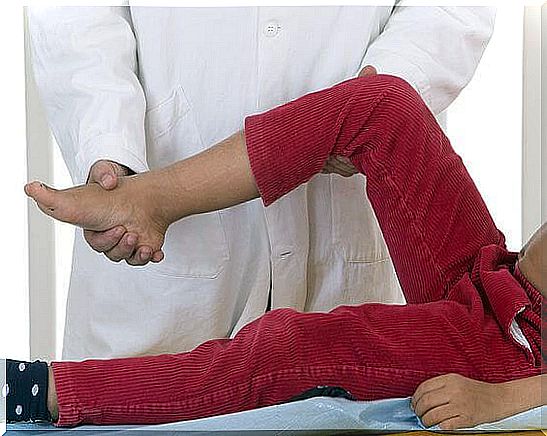Risks Of Not Detecting Rheumatic Diseases In Childhood

Rheumatic diseases are not very common in childhood, but when they appear they could leave serious consequences if they are not diagnosed in time. In general, these types of problems are treated in pediatric primary care consultations where detection may take a while.
However, experts assure that rheumatological problems that occur in childhood could be serious in the future, so it is an obligation that they be diagnosed in childhood to avoid consequences. It is understood that the genetic factor is essential in these cases, so the diagnosis could be anticipated at six months of age.
Updated data reveal that about 50% of children who were not diagnosed early in childhood, presented functional deficiencies in adulthood, which are obviously sequelae of the disorder. To promote the prognosis of these children, the information and knowledge that parents and pediatricians can acquire on the subject is very valuable.
Why is the diagnosis of rheumatic diseases delayed?

The first symptoms related to rheumatological diseases are treated in the first instance in the pediatric consultation, it is there where a first diagnosis appears; however, not all the time the professional has the information to practice the special exams. There is a standard examination to detect rheumatic problems, for example, anamnesis and physical examination are required.
Diagnostic tests are only applied when there is a suspicion of rheumatic affection, therefore, a single professional cannot be in charge of this task. Sometimes detection fails because there is not enough concern about the disease, this because it is not very common in children or because of a lack of information about it.
In this sense, what is estimated is a true concern of the pediatrician to rule out possible diseases at the rheumatological level so that the tests are practiced. So a simple referral to a specialist could prevent future damage.
In general, it is enough to check that the musculoskeletal system is not compromised with myalgia, joint pain or arthritis; this is proven by means of anamnesis, which can be extended to cutaneous and cardiovascular examination. Later, a physical examination and timely request for complementary tests can improve the chances of successful diagnosis and potential treatment.

Rheumatic problems could affect the child in the short term
Professionals in this specialty can guarantee a timely diagnosis, but this does not happen when the child is cared for at the primary level with personnel less trained in this subject. It is important to strengthen the strategies that lead to an early diagnosis, since the sequelae can become evident in youth or in short periods after the onset of the disease.
When there is a genetic predisposition, detection is mandatory before the baby is six months old. In addition, the interest of parents to ensure a diagnosis in pediatric rheumatology medicine units is important ; this to guarantee the initiation of a timely treatment.
The head of the Madrid Rheumatology Unit of the Niño Jesús University Children’s Hospital, Juan Carlos López Robledillo, has expressed his agreement with the high number of cases that have managed to improve their prognosis after timely detection. However, it is still concerned that there has not been a follow-up that allows the symptoms to be reversed definitively, in this particular, it ensures that abandoning treatment immediately reactivates the disease.
Main rheumatic diseases in children
The diseases of the rheumatological spectrum can be expanded into groups and subgroups of the same category, making it difficult to cover them all. However, we present below a standard clinical classification of conditions determined for the pediatric population.
- Inflammatory musculoskeletal diseases. These include spondyloarthropathies and juvenile idiopathic arthritis, which in turn are divided into different clinical subgroups.
- Fibromyalgia
- Nocturnal musculoskeletal pain syndrome
- Reflex sympathetic dystrophy
- Osteoporosis
- Autoinflammatory syndromes
- Connective diseases. This category includes systemic lupus erythematosus, dermatomyositis, Sjögren’s disease, and scleroderma.
- This could be reflected in other groups such as polyarteritis nodosa, Takayasu arteritis, Behçet’s syndrome, Wegener’s granulomatosis, among others.









